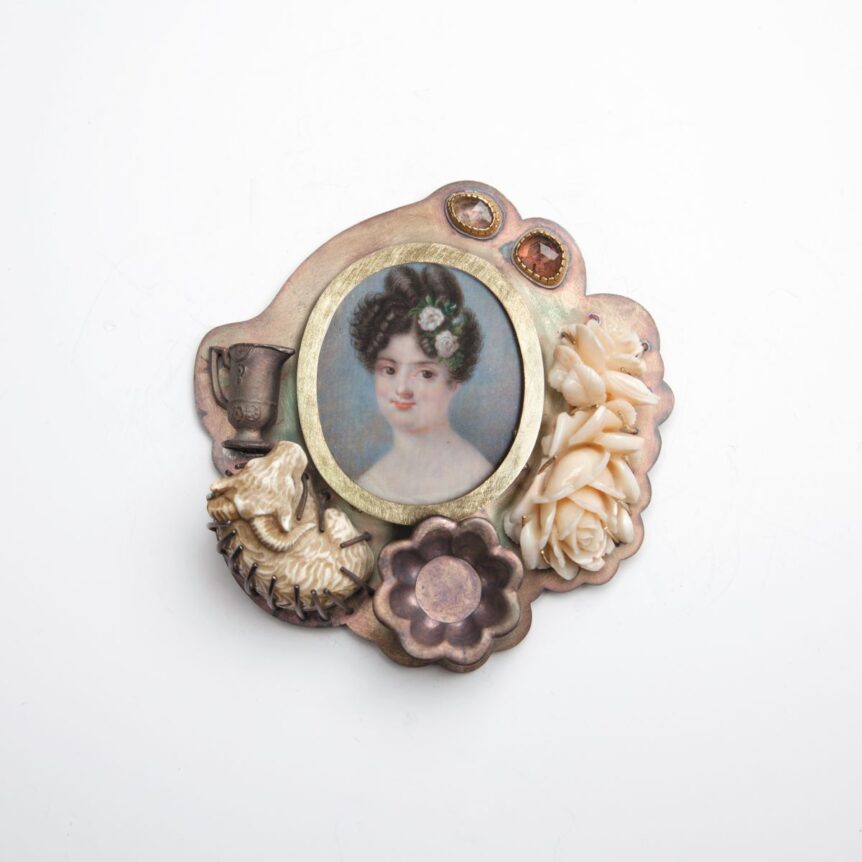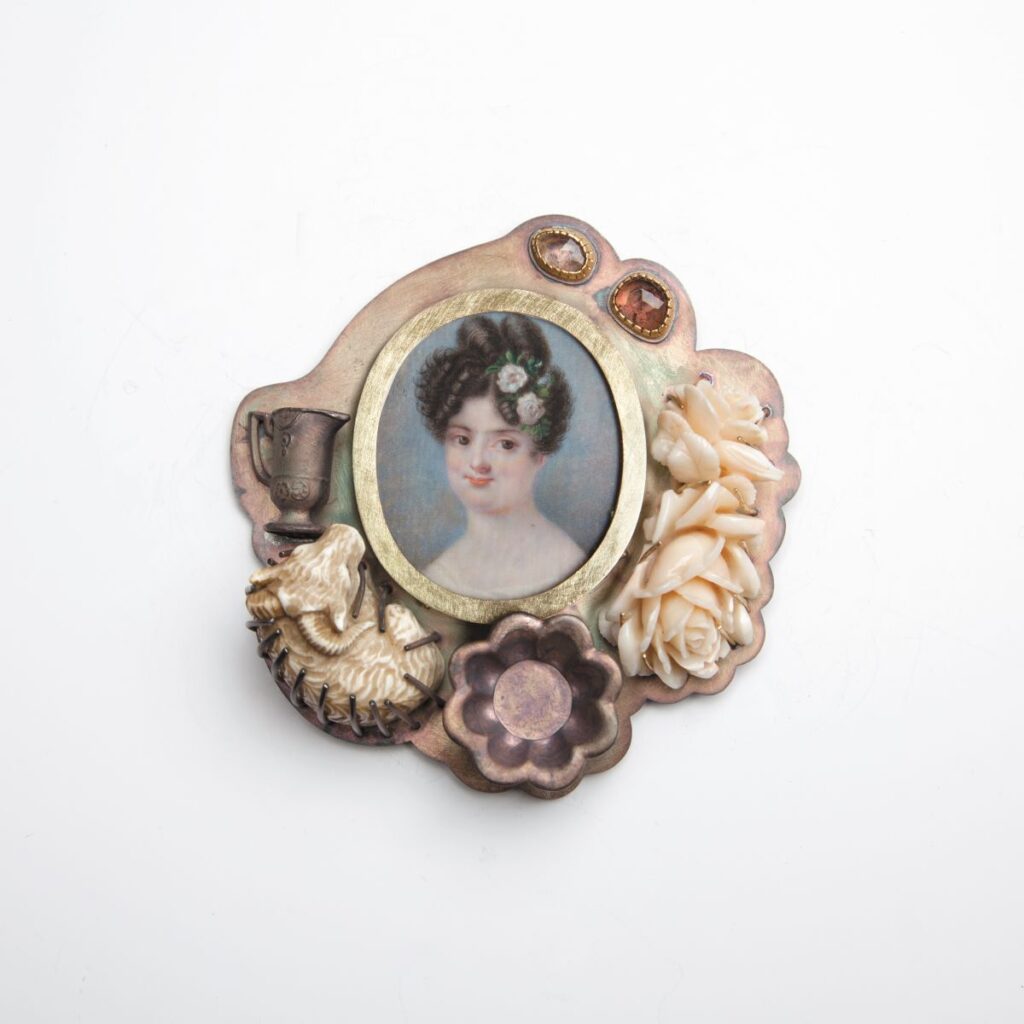
The jeweler Barbara Paganin is a proud Venetian. She’ll tell you exactly where she was born: in the same place where her family lived for generations, and where she had her first studio, a house on Fondamente Nuove, in the historic center of Venice. “There, you could see the sun rise over Murano and set in the direction of the Madonna dell’Orto church,” she says. It is no surprise that this bit of information is included when she introduces herself, because Venice is a key character in the tales she so beautifully crafts. Paganin is a maker of narrative jewelry—necklaces, brooches, and bracelets made of elements that range from trinkets to gemstones and that, taken together, suggest the outlines of a story. (Read more about the narrative jewelry genre in the July/August 2020 issue of The Magazine ANTIQUES.) Paganin employs found objects, either gathered or purchased in Venetian antiques stores, to create her singular, wearable works of art.
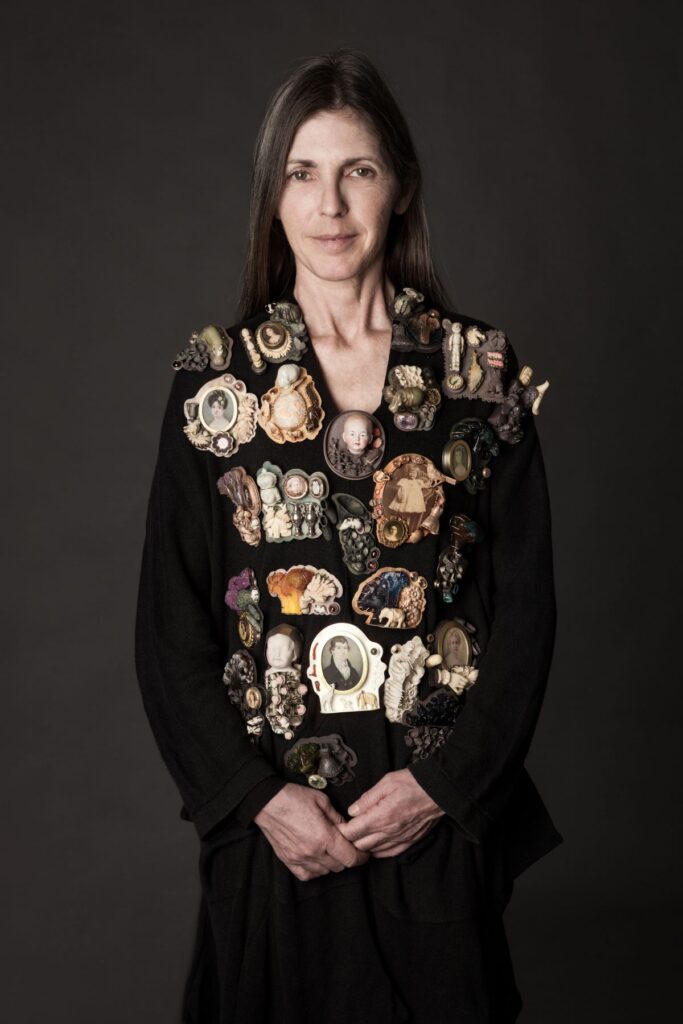
These days her studio is located on the mainland in the town of Oriago, where nobles came on holiday in the sixteenth century and Andrea Palladio designed villas for them. To step inside is to find oneself immersed in the artist’s life, the things that she holds dear, and in memories of places that are now gone. She recalls, for example, bringing home bits and pieces found on the street after the devastating Venetian flood of 2019. Paganin is a collector of cultural flotsam: ivory charms, dolls, antique lace, small photos, glass beads, porcelain figurines, and more. Glass display cases that line the walls of her small studio contain beautifully arranged tchotchkes waiting to be plucked and placed in a brooch or necklace. Some of these “gems” will be cast in silver and collaged together; others will be fixed between prongs like precious stones and placed into perforated, oxidized silver settings, each one playing an important part of the story she is telling. “My work looks like it’s from the nineteenth century due to the materials I use and the care with which they are made,” she says. The way she approaches her work is contemporary, however: it speaks of personal stories and memories.
The jewelry form she most frequently employs is the brooch, perhaps because it’s the form that most suggests a blank page. Paganin, however, rarely tells you what her work is about, and the titles she gives her pieces hardly give it away. She wants each wearer to interpret the jewelry as they wish, writing their own story. This idea is the basis for a major body of her work called Open Memory, or Memoria Aperta, which she began in 2011. “In the Memoria Aperta collection, I use some elements to tell stories that are not entirely defined because the observer must find his own emotion, his own memories,” she says.
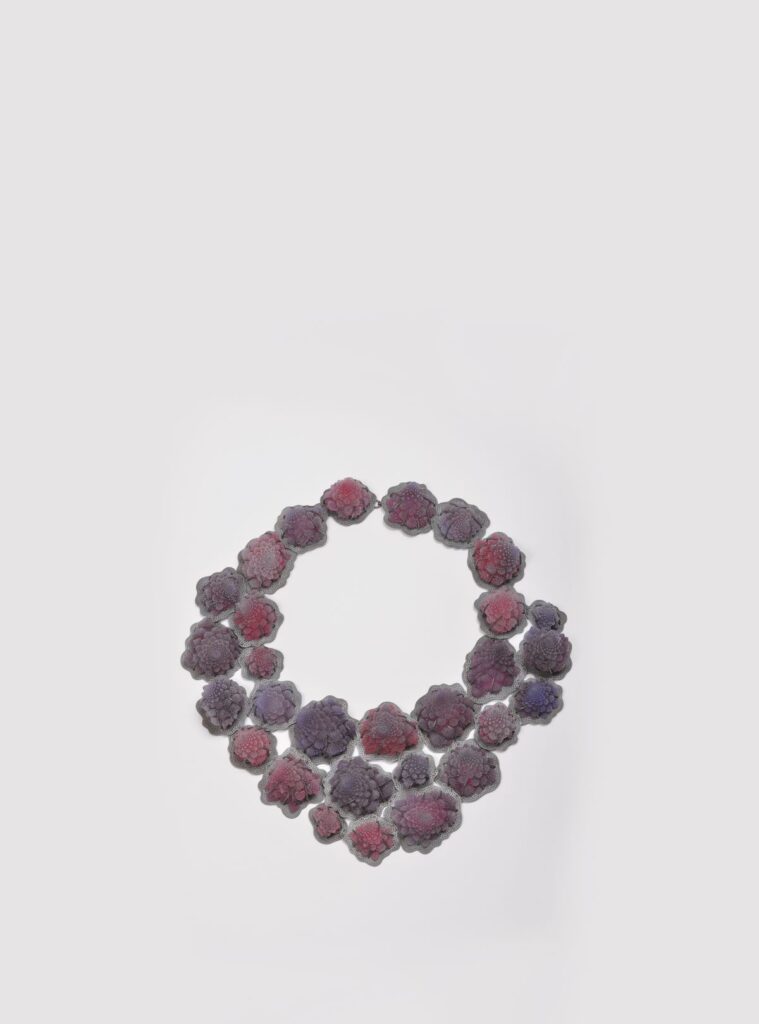
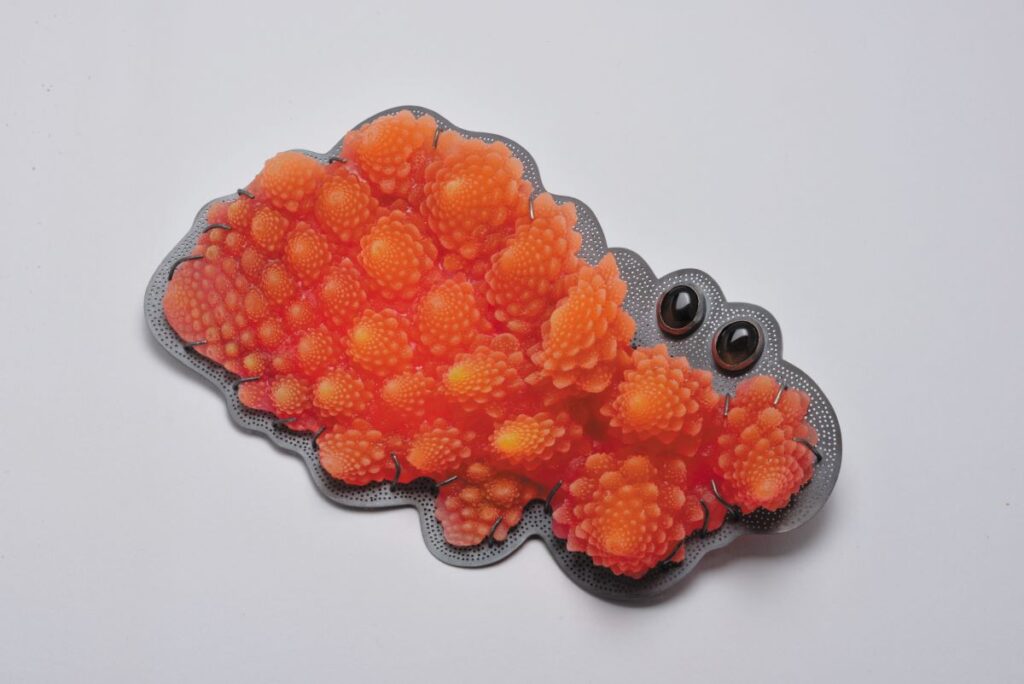
There is harmony in the way that Paganin arranges the found objects. “There are objects that fascinate me, such as miniature portraits on ivory. While I adore each individual piece that makes up a brooch or necklace, I never neglect the compositional balance,” she says. “There are elements that repeat themselves such as shoes, mice, trees. In some works, I have combined shoes that I think could have belonged to the person portrayed. When they are an accumulation, a stacking, they make one think of the past. They remind you of the sensation of the first walk, of the first steps.” If brooches are a blank page, she thinks of necklaces as a frame: “To wear a necklace we insert our head in the center and then the necklace frames our face.”
While Paganin most often uses an assortment of objects, recently she has singled out one for repeated use. The cavolfiore, or cauliflower, has become one of her favorite elements. Vegetables—such as cauliflowers, cabbage, or broccoli—have been part of the Memoria Aperta series, “the glass trees are actually sections of cauliflower,” she says. The vegetable forms are a means for her to introduce more color into her work. “They create a polychrome composition and always have a symbolic meaning—life, death, good, and evil,” Paganin says, adding that a cabbage resembles the human lymphatic system, which protects the body from disease. Paganin began creating replicas of vegetables in pâte de verre at a glass-making atelier on the island of Murano. She now makes them from polymethyl methacrylate—a ceramic-like synthetic polymer used to make artificial teeth. (Paganin learned how to use it from a dentist.)
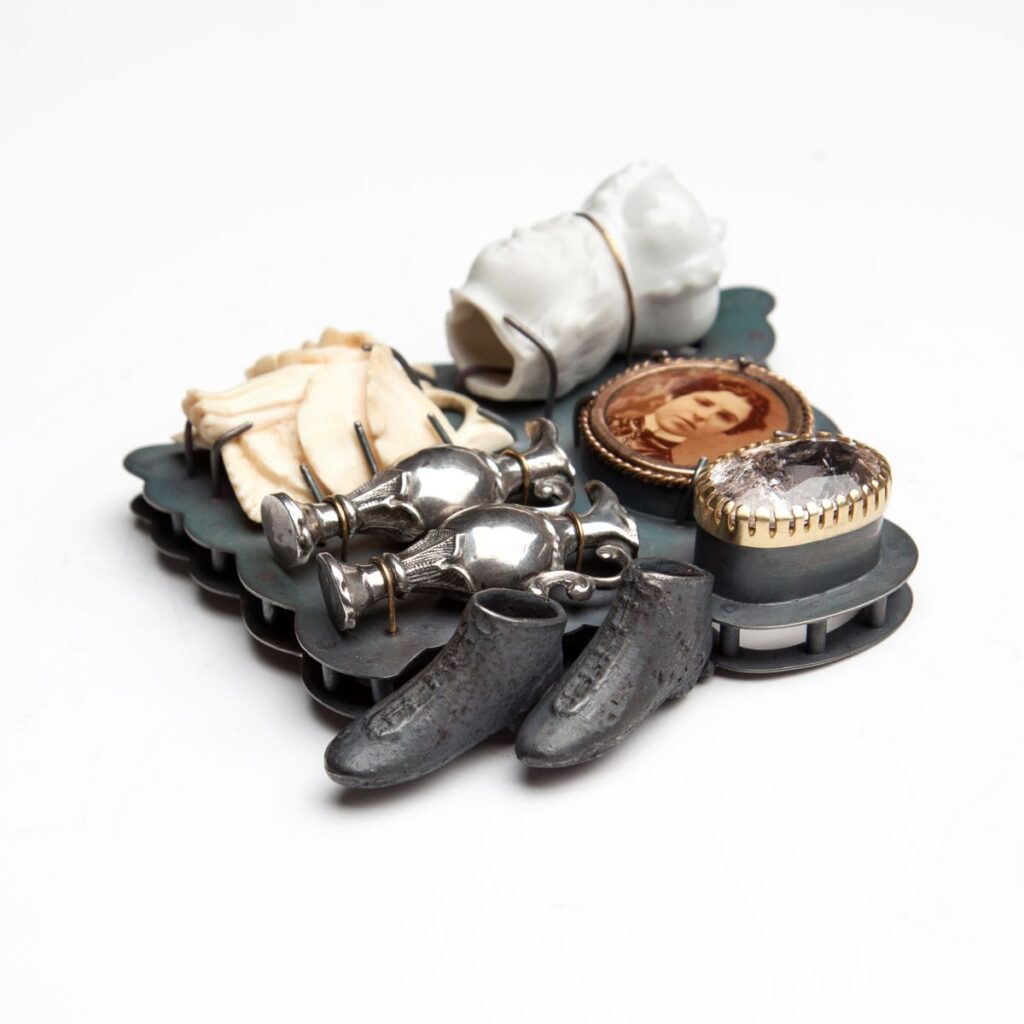
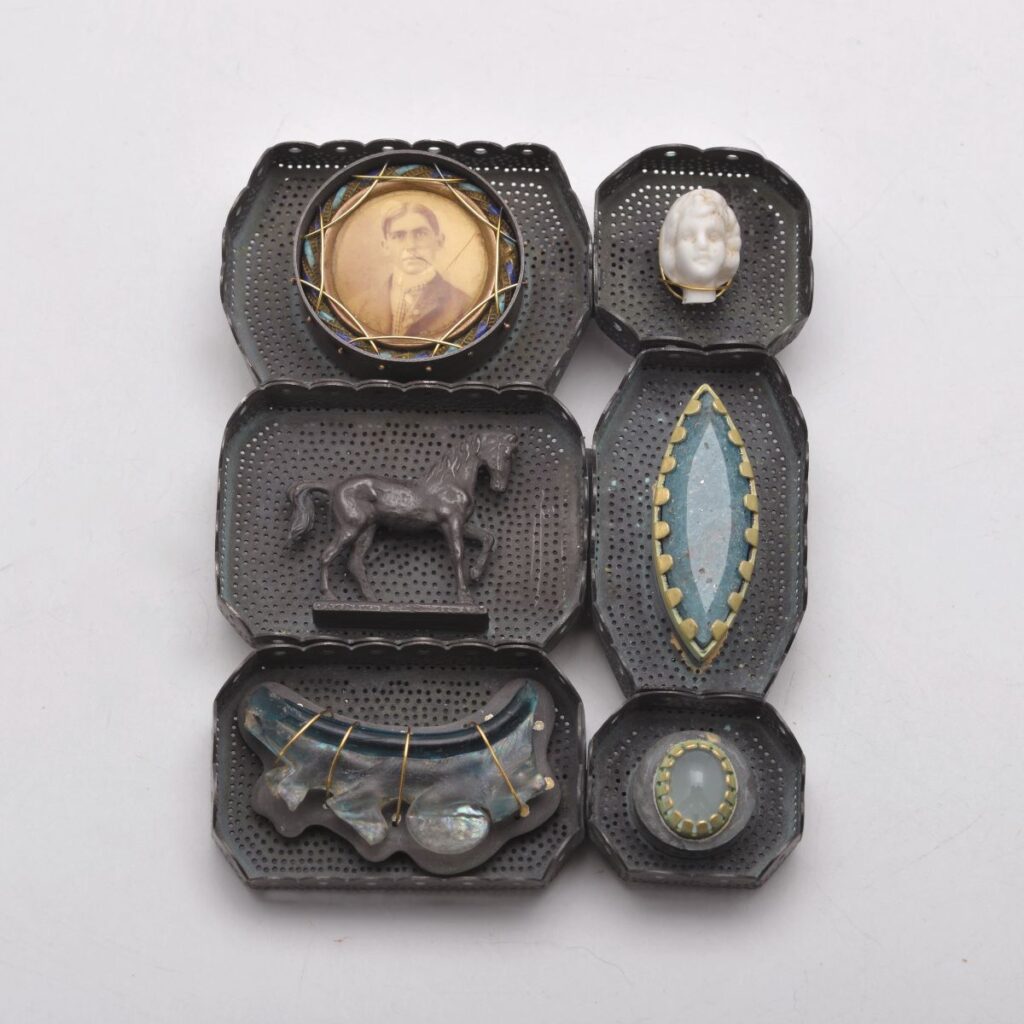
Paganin’s latest work is still about memories, but also about play. Using children’s beach toys as molds she has developed a technique that combines porcelain and iron to make jewelry that is both lightweight and durable. “Usually in my work I start from a thought and then I look for the best way to convey it,” Paganin says. The most recent piece, called You Are Braver Than You Think, is a necklace with a unicorn pendant similar to a stuffed animal her daughter had as a child. The title comes from a film adaptation of the Winnie-the-Pooh children’s books. When you pulled a cord, the stuffed unicorn would say a few phrases, and Paganin heard this one all day long.
Like Venice itself, Paganin’s work is full of romance, history, and stories. You never know what you will stumble on, but you know it will be magical. The artist’s imagination, like her collection, knows no bounds—and with more than twenty-five years of teaching and exhibiting already under her belt, there are many chapters left for her to write, in her life and in her work.
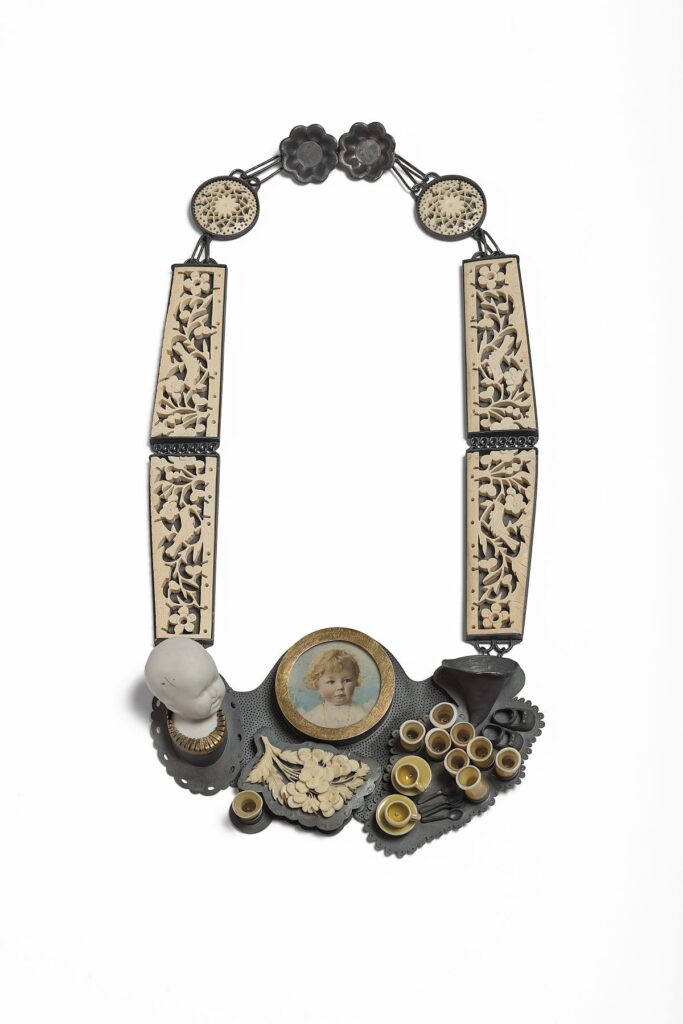
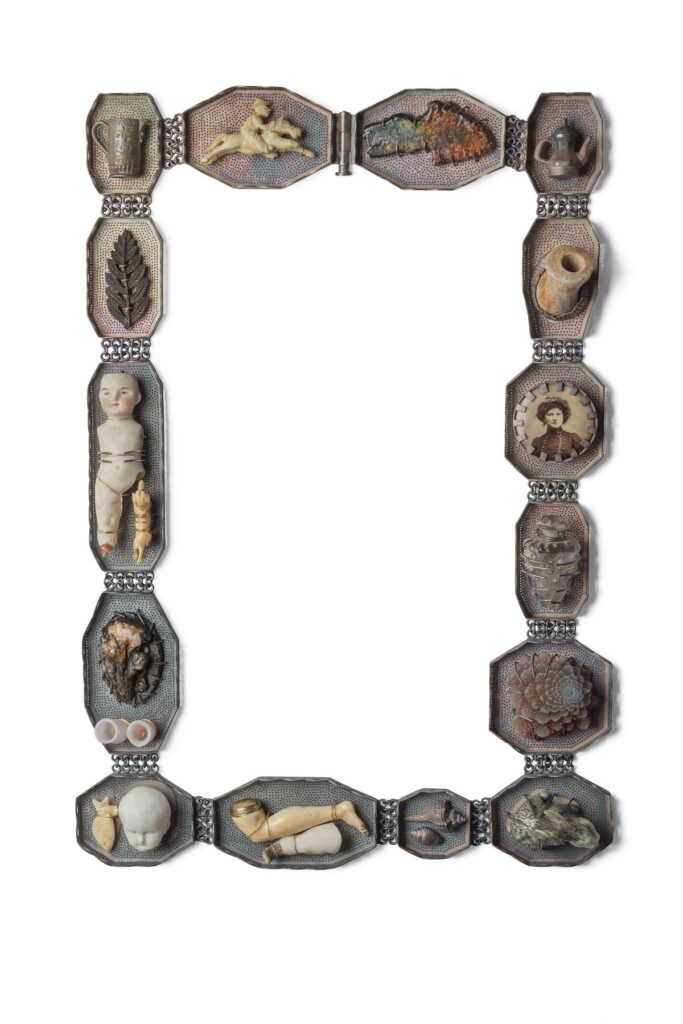
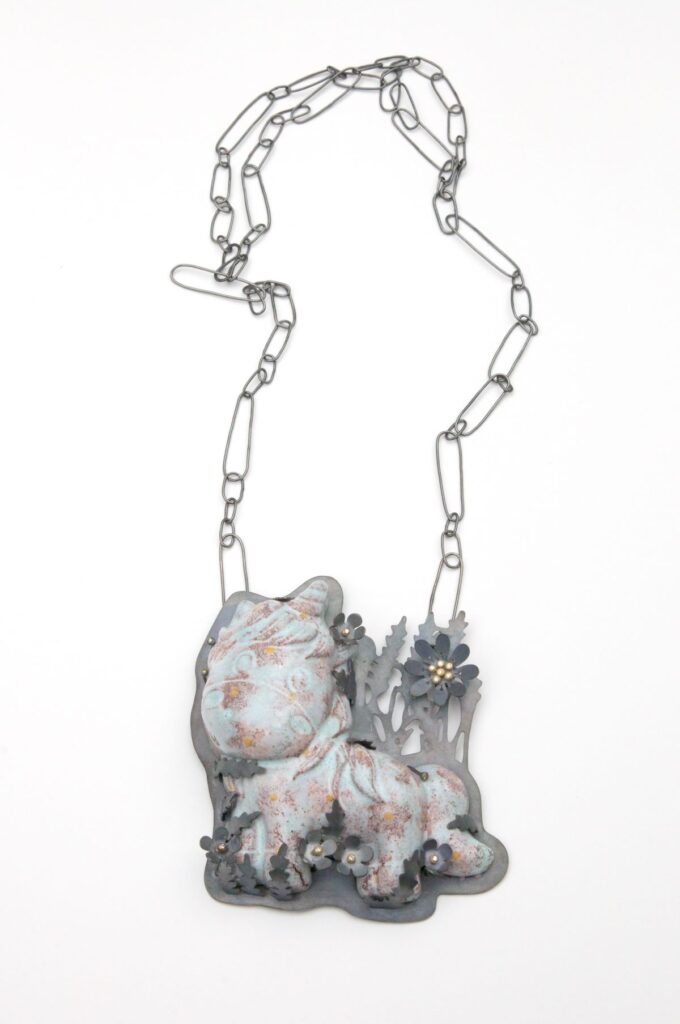
BELLA NEYMAN is an independent curator, lecturer, and writer specializing in contemporary art jewelry. She is the co-founder of New York City Jewelry Week, a citywide celebration held annually in November.

